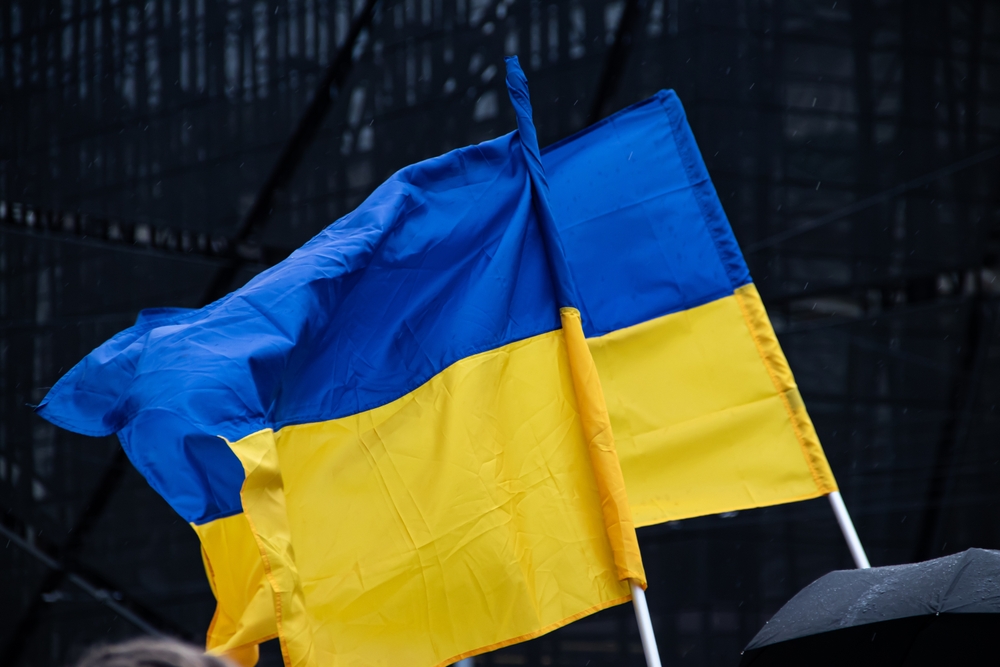Ukraine has emerged as a testing ground for the future of warfare, focusing on integrating Artificial Intelligence (AI) and drones. As many as one million Unmanned Aerial Vehicles (UAVs) are set to be deployed this year, marking a significant advancement in the use of AI to enhance the effectiveness of aerial combat systems. An analysis by David Kirichenko, featured in the Kyiv Post and the Henry Jackson Society, underscores the vital role AI is playing in boosting the precision and capabilities of Ukraine’s drone operations.
AI Boosts Drone Precision and Success
The impact of AI on Ukraine’s drone capabilities is profound. According to reports from TIME magazine and the UK’s Forces News, the introduction of AI has dramatically improved the accuracy of Ukrainian drones, increasing their success rate from under 50% in 2023 to nearly 80% this year. Much of this improvement can be attributed to Palantir, a U.S.-based company described by TIME as the “AI arms dealer of the 21st century.” Palantir’s software has become a game-changer for Ukrainian drones, transforming how they operate on the battlefield.
One notable example is the SAKER reconnaissance drone, equipped with Palantir’s advanced AI software. The SAKER drone can independently identify targets like personnel, tanks, and armored vehicles and relay that data to command centers for real-time decisions. Its machine-learning capabilities have enabled it to recognize Russian soldiers by their uniforms, equipment, and even movements, providing a tactical edge in combat.
This technological advancement has proven critical in an environment where traditional drone navigation methods have become vulnerable to electronic warfare (EW) tactics. The SAKER’s inertial guidance system, which operates independently of GPS, makes it far more resistant to jamming, offering Ukraine a significant advantage in maintaining effective drone operations.
Palantir AI Elevates Ukraine’s UAV Strike Rate
Before adopting AI, Ukrainian UAV pilots struggled with low success rates—sometimes as low as 10% for new operators, while even seasoned pilots rarely exceeded 50%. The integration of Palantir’s AI, now powering nearly all of Ukraine’s drones used for targeting artillery, has boosted strike accuracy to nearly 80%. This dramatic improvement highlights AI’s transformative role in the conflict, allowing Ukraine to compensate for Russia’s numerical advantage with smarter, more precise operations.
Palantir’s AI software aggregates data from diverse sources such as drones, radar, thermal imaging, and human intelligence to detect battlefield movements and locate artillery fire. The software processes this data and offers military commanders a range of targeting options, enabling precise strikes that are critical in countering enemy forces.
The Ethical Dilemmas of AI on the Battlefield
While AI provides a clear strategic advantage, its use on the battlefield raises ethical concerns. Kirichenko cautions that the increasing autonomy of AI-powered drones introduces risks, as AI systems might lack the nuanced understanding of complex combat situations that human operators possess. This is particularly concerning when AI systems identify targets based on movement, even when soldiers are not in uniform.
Kirichenko’s critical question is whether AI can distinguish between combatants and civilians, especially when Russian soldiers are out of uniform. He suggests that while Ukrainian and Western forces might exercise greater caution in such scenarios, Russia’s approach may be less discerning, adding to the moral complexities of deploying AI in warfare.
The Future of Warfare: Algorithms Over Armor
Despite the ethical concerns, the rapid development of AI in Ukraine’s military strategy suggests that AI’s role in warfare will continue to expand. As Kirichenko notes, Ukraine’s use of cutting-edge technology to counter Russia’s larger forces has defied traditional expectations about warfare dynamics. This shift toward AI-driven combat strategies is crucial for Ukraine to maintain its competitive edge in the ongoing conflict.
Forces News aptly captures the trend, stating, “The war of the future is likely to be as much about algorithms as armor.” The increasing role of AI in military strategy highlights the potential of advanced technologies to reshape the battlefield, offering a mix of strategic advantages and ethical challenges that will shape the future of warfare.







